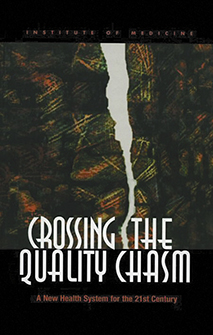The drive toward patient-centered care in the United States. While the U.S. has unrivaled status in many areas, health care is not one of them. In 2000, the World Health Organization (WHO) ranked the United States 37th in health care quality in the world. In the years 2004, 2006, 2007 and 2010, the Commonwealth Fund, an organization that conducts independent research and provides grants to improve health care practice and policies, completed more studies.
These studies compared the United States to six other industrialized countries (Australia, Canada, Germany, the Netherlands, New Zealand, and the United Kingdom) on measures of health system performance. Performance was measured in five areas: quality, efficiency, access to care, equity and the ability to lead long, healthy, productive lives.
Despite spending the most money on health care, the United States ranks dead last. The most significant way the U.S. differs from other countries is the absence of universal health care coverage. But even when access and equity measures are not considered, the U.S. ranks behind most of the other countries on most measures (Commonwealth Fund, 2010).
As a result, governing bodies are insisting that hospitals improve care by moving toward patient-centered care as well as other quality improvement measures. The surveys you receive after visiting a doctor or medical facility are designed to measure patient satisfaction and the level of patient-centered care. Medical provider reimbursement will be increasingly based on these scores. Accordingly, everyone in health care is talking about patient-centered care.
Here’s a simple definition of patient-centered care: “Nothing about me without me” (Delbanco et al, 2001). The landmark report, Crossing the Quality Chasm: A New Health System for the 21st Century, by the Institute of Medicine (IOM), however, makes the definition a bit more complicated. This report defines patient-centered care as “care that is respectful of and responsive to individual patient preferences, needs, and values and [ensures]that patient values guide all clinical decisions” (Institute of Medicine, 2001).
According to the IOM, patient-centeredness is one of six aims for quality improvement in health care. The others are safety, timeliness, effectiveness, efficiency and equity.
Although foreign to longstanding practice in U.S. health care, research shows that patient-centered care yields better results:
– Patients who participate in their care have better outcomes overall.
– Patients are more likely to follow a plan of care when they help to design the plan.
– Patients who receive patient-centered care report higher patient satisfaction scores.
– Unfortunately, for most patients, patient-centered care is an anomaly.
Hospitals are trying to change the culture to one of patient-centered care rapidly. Even so, hospitals often miss the mark. A great deal of money is being spent on educating hospital staff on the definition of patient-centered care. The problem, however, isn’t lack of understanding the definition. The problem is putting patient-centered care into practice. The culture of control is so engrained in U.S. health care that a major shift in thinking is needed.
Patient-centered care is a dynamic human interaction between patient (and advocates) and health care provider. Each patient will have different input because each is unique. It is the provider’s job to integrate the patient’s input into the plan to achieve optimal results.
Providers naturally look at things through the lens of a physician or nurse rather than the lens of the patient. If you are unhappy with your care or see an opportunity to improve it, speak up. This is your obligation. Providers can’t make a course correction after the fact. They can’t fix a problem until they know they have one. Your participation in providing feedback is crucial for a successful outcome.
10 Ways to Participate in Your Healthcare and Reduce Medical Errors
• Speak up! Never be afraid to speak up, ask a question, or challenge something that doesn’t look right. Odds are, if something doesn’t look right, it isn’t right.
• Be informed. Use the internet to perform your own research. Read the info packet given to you at the hospital. Know your rights as a patient; they must be posted on every floor in the hospital.
• Be flexible. Be aware of the hill you’ll die on and the ones you won’t. Acknowledge that the goal is always quality care.
• Know the name of each provider. Know the role that provider plays (attending, resident or intern). Know who the decision makers are in your care (besides you).
• Ask for a copy of the results of any procedure and diagnostic test and keep in your own medical file or binder.
• Know your medications and dosing. Always have a list in your wallet. Question new medications, a change in dosage, or a pill that looks different from what you usually take.
• Demand to be included in the patient plan of care. This includes being informed of any changes to the plan prior to the change. Remember the definition of patient-centered care: Nothing about me, without me.
• Demand that all providers check the patient ID band before giving any medication, procedure, or patient interaction.
• Demand that all providers wash their hands.
• Be present for your loved one or have a loved one with you if you are the patient. This is the number one way you can ensure better care.
In many cases, you won’t get patient-centered care unless you relentlessly pursue it. With perseverance, however, you can get exceptions to hospital and insurance practices to customize your loved one’s care and improve his or her quality of life. Be present. Ask questions. Speak up. Keep good records. Learn to think beyond how it is always done, and to speak in dollars and sense. Refuse to be intimidated. Most importantly, don’t give up.
Ruth Tarantine serves as the chair of online nursing graduate programs and nursing faculty at a private university. With 25 years of nursing experience, she holds a registered nurse diploma from Mercy Hospital School of Nursing, a bachelor’s degree in nursing from Carlow University, a master’s degree in nursing from the University of Pittsburgh, and a doctorate of nursing practice from Chatham University.





